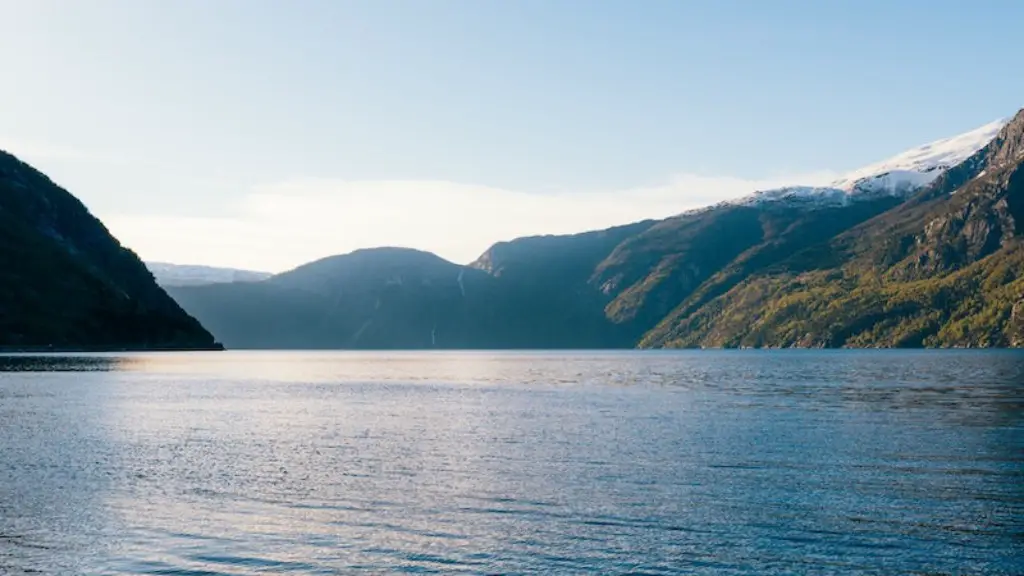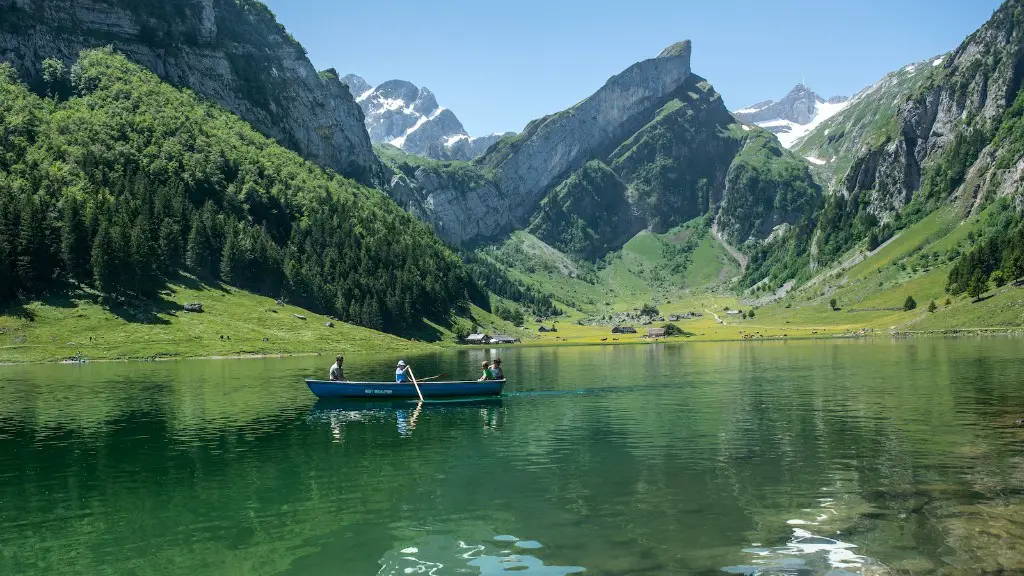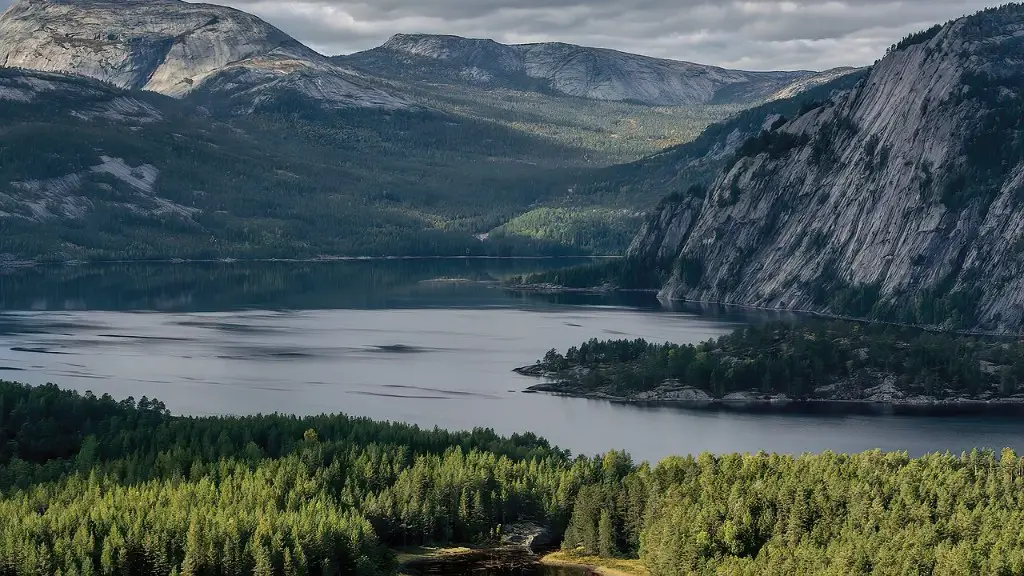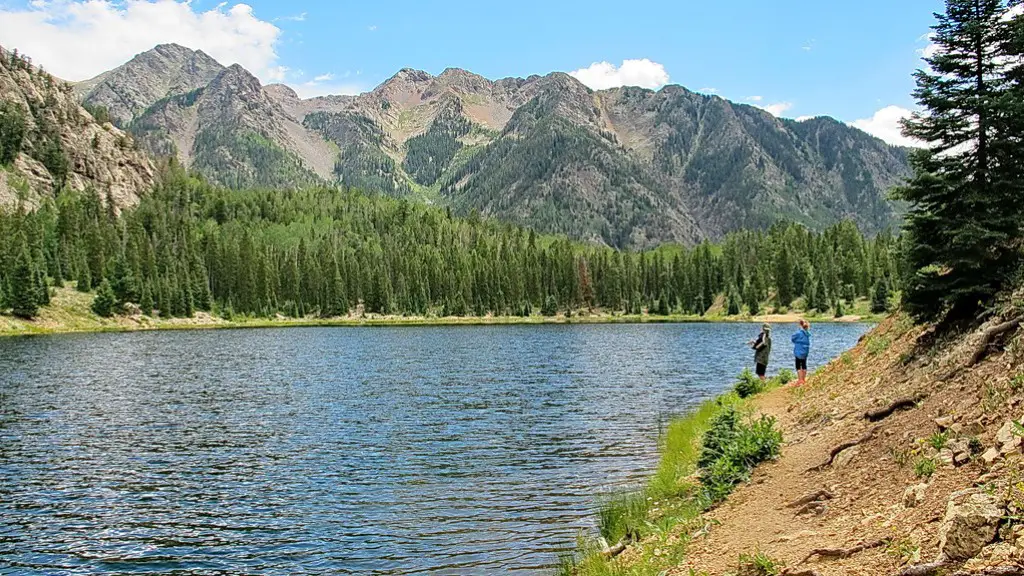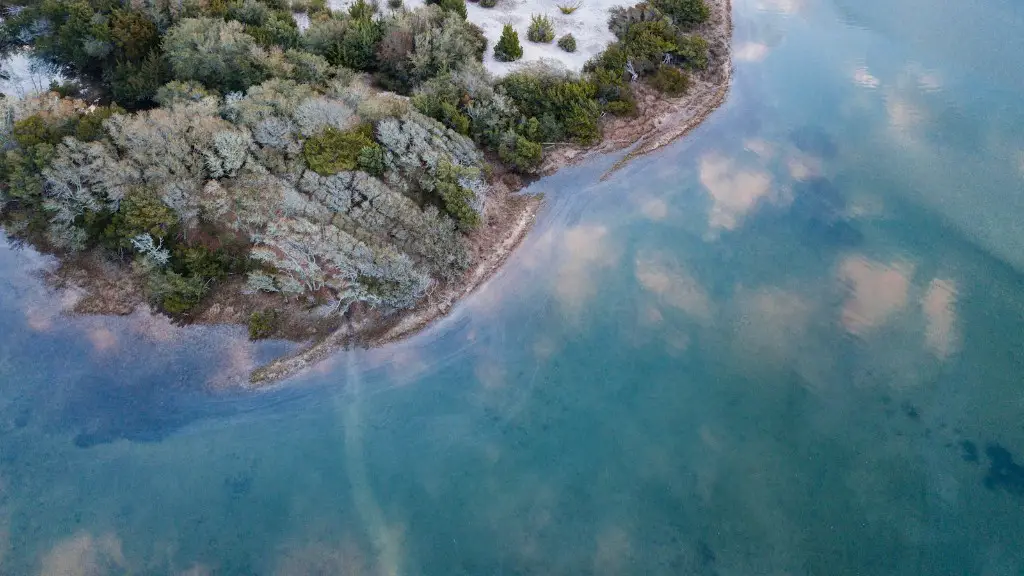In the upper Midwest and Great Lakes region, the iconic Lake Superior is a major contributor to air, earth and water systems. Each year, lake-lovers anxiously await the day when it is finally frozen and they can explore its frigid depths. But when is Lake Superior typically frozen? Is it frozen yet?
At its deepest points, Lake Superior is over 1000 feet deep, and with an average surface temperature of 73° F in the summer and 41° F in the winter, it can be an unpredictable body of water. Surface freezing typically begins in November and, while year-to-year timelines can vary, it usually reaches its peak freeze-over by late January or early February. The last time the entire lake was reported to be frozen over was in 2014. In the years since, however, only the near-shore regions have experienced significant freezing.
Air temperature is the primary factor that drives the freezing of Lake Superior, and temperatures below 17° F are necessary for the lake to freeze. The Minnesota Climate Working Group has reported that the temperature of the lake is rising faster than that of air temperature, as are levels of freshwater runoff, due to a number of factors including increased precipitation, land development and agricultural runoff. The higher saturation levels of freshwater runoff and their influence over the lake’s temperature can influence the timing, extent and duration of surface freeze-over.
The length of the lake’s freeze-over is also associated with the power of the winter winds that blow across its surface. When the winds are strong, the effects of choppy waters can extend farther from its shoreline, prolonging winter ice coverage. The months of December, January and February also play an integral role in when the lake freezes, as the lowest temperatures occur during these months.
So is Lake Superior frozen yet? As of November 2018, the lake has experienced only marginal ice coverage, with isolated patches lingering in northern regions near bay outlets. While a majority of lake surface remains open, temperatures are dropping, and colder temperatures are predicted over the coming weeks. It is likely that Lake Superior will experience more extensive freezing in mid-to-late December, but more sustained ice coverage is unlikely until late January. Still, only time will tell if the lake is destined for a full freeze-over this year.
Will a Freeze-Over Affect the Ecology of Lake Superior?
When the lake does freeze, the effects can be felt across its entire ecosystem. Fish, for example, are reliant on open water for both food sources and migration pathways, and their ability to safely seek warmer waters to spawn can be affected by the presence of ice cover. On land, an early freeze-over can further disrupt the fragile food chains that make up the lake’s terrestrial and wetland communities.
The freezing of Lake Superior can also have an impact on the overall regional climate. The lake’s high surface area can act as a source for reflective radiative cooling, keeping temperatures in surrounding regions relatively cooler during winter. A freeze-over of the lake’s surface, however, would remove this cooling effect, leaving surrounding areas exposed to the full brunt of winter severity.
The freeze-over of Lake Superior also biases scientific investigations of the lake’s environment, as many investigations are conducted during winter months when iced-over waters can make research more dangerous. Through the disruption of typical research procedures, the freeze-over of Lake Superior can lead to a regression in our understanding of the lake.
Stakeholders of Lake Superior
Lake Superior is an important resource for both people and wildlife. For example, it provides an environmental refuge for many species of birds, fish and mammals. The lake also serves as a primary source of freshwater for local communities, and its influence on shipping and tourism networks has been well-documented. The stakeholders of Lake Superior all have a vested interest in when and how hard it freezes and thaws each year, and the changing environmental conditions due to rising temperatures have made long-term predictions of its freeze-over difficult.
Speculations from some experts have suggested that the lake’s freeze-over could continue to become less frequent and predictable in the coming decades. If this comes to pass, it is likely that stakeholders of Lake Superior will need to draw on flexible management plans to ensure the lake’s safe use and the conservation of local species. Adaptive strategies and research conducted prior to the lake’s freeze-over could help local stakeholders learn to navigate and navigate the lake’s freeze-over conditions, protecting the lake and its resources.
Impacts of Climate Change on Freeze-Over
Climate change is having a major impact on the freezing of Lake Superior, as temperatures in the region are predicted to increase over the coming years. The effects of climate change can be especially pronounced near the lake’s shorelines, with some predictions suggesting that the surface ice on Lake Superior could completely disappear within the next 30 to 50 years. This can have major repercussions, both positive and negative, on the lake’s ecology, seniority and economy.
Furthermore, due to Lake Superior’s prominent position in the Great Lakes, its changing freeze-over could affect other lakes in the region as well. Research has suggested that increased climate variability can enhance ecosystems in some areas, while at the same time, lead to the death of species in others. The onset of earlier freeze-overs and later thaws could also have serious implications for fish stock populations, as some species may be unable to adjust to the lake’s changing freeze-over pattern.
The effects of climate change on the freeze-over of Lake Superior can also be seen in the region’s tourism industry. Longer periods without freeze-over could lead to earlier tourist arrivals and later departures. On the other hand, increasingly unpredictable freeze-over conditions could lead to scheduling difficulties and unpredictable seasonal weather, thus making the job of planning winter vacations more difficult.
Mitigating Climate Change Impacts
The potential impacts of climate change on the freeze-over of Lake Superior require concerted actions to ensure its health and sustainability. Local governments, stakeholders and citizens all have a role to play in managing the effects of climate change and the resulting changes in the lake’s freeze-over. For example, the US Fish and Wildlife Service recommends that local agencies consider updating flood-zone standards, minimizing commercial and residential development in areas near the lake, and providing incentives for land conservation.
Communities in and around Lake Superior can also contribute to efforts to mitigate the impacts of climate change on the lake. By participating in environmental initiatives such as adopting energy-saving measures, reducing recreational watercraft traffic, and proper disposal of waste water and runoff, citizens can help keep the lake’s waters cleaner, ensuring the health of its ecological and economic systems.
In addition, citizens can pay attention to local weather trends and develop an understanding of Lake Superior’s Freeze-over conditions. By familiarizing themselves with changes in the lake’s freeze-over, citizens can be better prepared for colder temperatures, as well as gain insights on how climate change is impacting their local environment.
Monitoring and Conservation
Given the many stakeholders of Lake Superior, a number of monitoring and conservation initiatives focus on tracking the lake’s freeze-over pattern. The U.S. Geological Survey, for example, produces monthly reports, which document the onset, extent and duration of freezing conditions across the lake. In addition, groups such as the Minnesota Sea Grant program and the Lake Superior Ice Research Team offer online resources, often displaying data such as weather forecasts, ice thickness and stream flow, allowing citizens to track the freeze-over pattern of the lake on their own.
Overall, Lake Superior is a diverse and unique environment, and its freeze-over conditions can have a major impact on the surrounding ecology. In order to ensure the sustainability of the lake, it is important for stakeholders, citizens and governments to work together to mitigate the impacts of climate change, develop adaptive strategies, and track freeze-over patterns.
